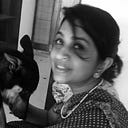Indian women and Freedom
A hundred years back, while Indians were fighting for independence from imperial rule, women were engaged in another fight too. They were fighting against a patriarchal system that denied women a formal education and kept them behind purdah. Girls as young as eight were married off, and sent to live with their husbands as soon as they attained maturity. Most became mothers in their early teens, and many died during childbirth before they reached the age of 18. Some of these child brides were married to men many years their senior, and were widowed at an extremely young age.
It was only in 1929 (and against stiff opposition) that the Sharada Act was passed which specified the minimum age of marriage at 14, but even after that, women were kept away from public life, unless their father or husband “allowed” them to step out.
Prior to 1930, it was only a few women- all from educated, elite families- who participated in the Freedom Struggle. Women like Sarojini Naidu and Mithuben Petit who stood shoulder to shoulder with Mahatma Gandhi when he violated the Salt Law. Women like Kamaladevi Chattopadhyay who led a contingent of women in Bombay walked to Chowpathy to make salt, and then sold it in the city. The popular story goes that when Kamaladevi Chattopadhyay was arrested and produced before the magistrate, she held up a packet of salt and asked if he would like to buy the ‘salt of freedom’!
Though Gandhiji called for women to join the Salt Satyagraha, their participation remained limited, till the Civil Disobedience Movement started and all the leaders of the freedom movement were imprisoned along with tens of thousands of freedom fighters. Then, in the words of Jawaharlal Nehru, something very unexpected happened-
“Most of us menfolk were in prison. And then a remarkable thing happened. Our women came to the front and took charge of the struggle. Women had always been there of course, but now there was an avalanche of the, which took not only the British Government but their own menfolk by surprise. Here were these women, women of the upper or middle classes, leading sheltered lives in their homes- peasant women, working- class women, rich women- pouring out in their tens of thousands in defiance of government order and police lathi. It was not only that display of courage and daring but what was even more surprising was the organizational power they showed.”
That was the decisive moment when the British Government realised they could not hold India much longer. If women, who till a few years back were in purdah and were still not allowed to take part in public life, could come to the forefront to demand freedom, sooner or later they would have to leave the country.
But who were these women? Some of them were wives and sisters of leaders, prominent among whom were Kasturba Gandhi, Kamala Nehru and Nehru’s sister, Vijaylakshmi Pandit, but many others joined the struggle and rose to leadership positions despite not being from political families.
They were women like Aruna Asaf Ali who chaired the session of the Indian National Congress after the entire Working Committee was put behind bars, and who valiantly hoisted the Tricolour at great personal risk. She was compelled to go underground, and even had a price on her head.
There was Durgabai Deshmukh, who had walked out of a child marriage and devoted her life to the Freedom Movement. There was Sucheta Kriplani, a professor of history who married a freedom fighter two decades her senior and threw herself into the freedom struggle. Usha Mehta who organised an underground radio during the Quit India Movement.
But more than these women, there were the thousands of women who stepped out of home for the first time to fight for independence. These were the women who organised ‘prabhat pheris’ where they went around their community in the morning singing patriotic songs before going back home to cook for the family. These were the women who, when their children complained that the police snatched away the tricolor dressed them in saffron, white and green, so the colours would stand out forever. These were the women who operated the underground printing presses at night, and provided sanctuary to the freedom fighters fleeing from the police. These were women who passed on messages and acted as wives of freedom fighters to enable them evade the police.
Post Independence, some of these women occupied positions of power. Sucheta Kriplani became the first female Chief Minister of Uttar Pradesh. Aruna Asaf Ali was the first lady mayor of Delhi and did a lot of work in education. Durgabai Deshmukh was a lawyer who served as a member of the Constitute Assembly and later of the Planning Commission. Vijaylakshmi Pandit headed the Indian delegation to the United Nations and was the first ever woman to be elected the President of the United National General Assembly. Rajkumari Amrit Kaur was the Health Minister in the first Union Cabinet of Independent India. Fifteen women were elected to the Constitute Assembly which drafted the Constitution of India.
However, women were not able to capitalize on these early gains. The representation of women in public life remains disproportionately low. This results in the framing of laws and policies that do not serve the cause of empowering women. Even when such laws exist, they are not implemented in a way that will benefit women.
Seventy four years after India attained freedom from imperialism, the freedom of Indian women is still curtailed. A nation cannot be considered free till all it’s citizens are free. India still has a long way to go.
